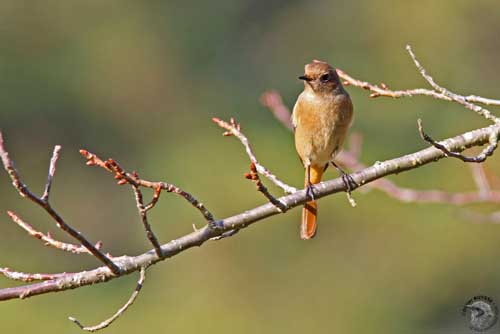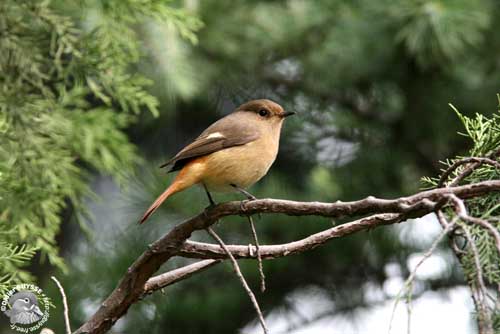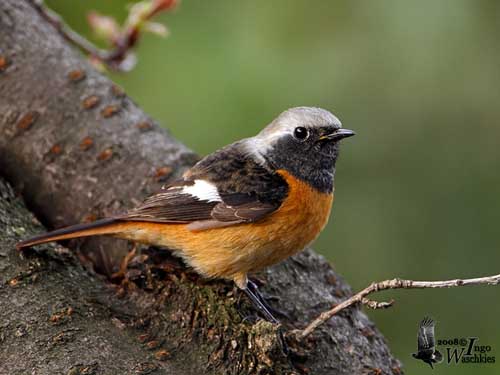
Fr: Rougequeue aurore
All : Spiegelrotschwanz
Esp : Colirrojo Dáurico
Ital : Codirosso daurico
Nd: Spiegelroodstaart
Sd: Svartryggad rödstjärt
Photographers:
John Anderson
John Anderson Photo Galleries
Didier Buysse
Vision d’Oiseaux
Ingo Waschkies
Bird Photography
Text by Nicole Bouglouan
Sources:
HANDBOOK OF THE BIRDS OF THE WORLD Vol 10 by Josep del Hoyo-Andrew Elliott-David Christie - Lynx Edicions - ISBN: 8487334725
A Field Guide to the Birds of South-East Asia by Craig Robson. New Holland Publishers. ISBN: 9781780090498
BirdLife International (BirdLife International)
Wikipedia, the free encyclopaedia
Daurian Redstart
Phoenicurus auroreus
Passeriforme Order – Muscicapidae Family
BIOMETRICS:
Length: 15 cm
Weight: 11-20 g
DESCRIPTION:
The Daurian Redstart is a fairly common species in East Asia. It often perches on prominent poles in open areas.
The adult male in breeding plumage has pale grey crown to upper mantle and black lower mantle. We can see a conspicuous broad, white wing patch. Rump, uppertail-coverts and tail are rufous, except on blackish central rectrices. Scapulars are black, whereas wings are blackish.
The underparts are orange-rufous. Chin, throat and face are black.
Bill, legs and feet are black. The eyes are dark brown.
The male in non-breeding plumage has mostly brownish-grey crown to upper mantle. There is a broad, brown fringing on lower mantle, giving scaling pattern, and a pale fringing on breast too.

The adult female has uniform brown plumage with paler underparts. Rump and tail are like in male, and she has the broad white wing patch too, but this one is slightly smaller than in male. We can see a pale buffish eyering.
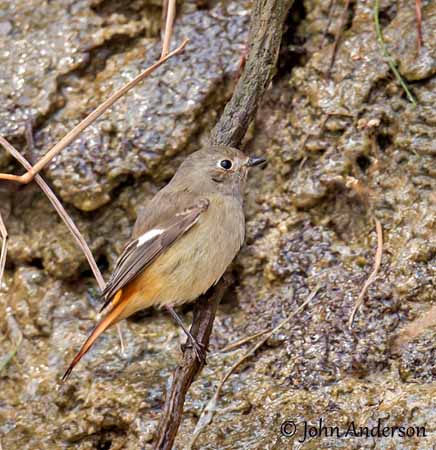
The juvenile resembles female but its plumage shows dark scaling and buff spots on both upper and underparts.
SUBSPECIES AND RANGE:
Both races are migratory.
P.a. auroreus (here described and displayed) occurs in SC Siberia and Mongolia, E to Amur Land, S to Korea and NE China. It winters in Japan, Taiwan and SE China.
P.a. leucopterus is found in NE India and C and E China. It winters in E Himalayas, E to N Indochina.
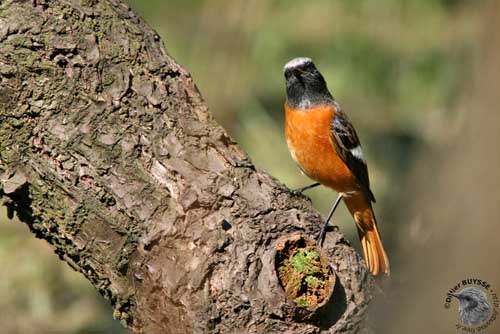
CALLS AND SONGS: SOUNDS BY XENO-CANTO
The Daurian Redstart’s calls include a high-pitched “tseep” or “fit”, scolding “tak” or “teck teck” notes in alarm, and a rapid rattling “tititik”.
The song is a series of short, sweet descending phrases with first, one or two clear notes, followed by a scratchy trill and a wheezy flourish with some clear slurred notes.
On their wintering grounds, both sexes may utter some “siup siup siup” as territorial warning.
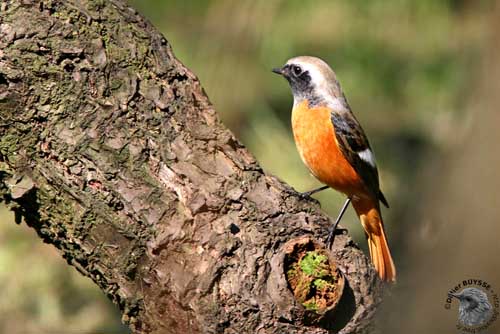
HABITAT:
The Daurian Redstart frequents sparse, open subalpine forests and edges, clearings, scrub, riverine thickets, orchards, parks and gardens. It can be seen near human settlements too. This species occurs at high elevation, up to 2500 metres. It breeds higher, between 2800 and 3700 metres.
During winter, it can be seen along roadsides, in riverbed scrub including Euphobiaceae and Salix plant species, and in open hilly country. It is usually seen from sea-level up to 2000 metres or more according to the range.
Evidence of territorialism in winter has been reported.
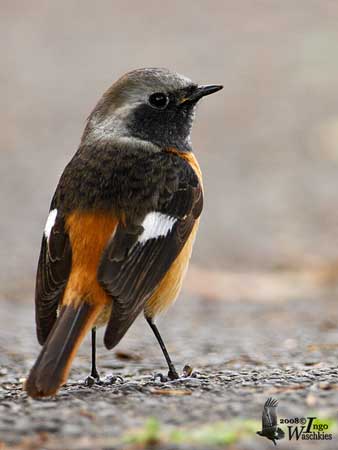
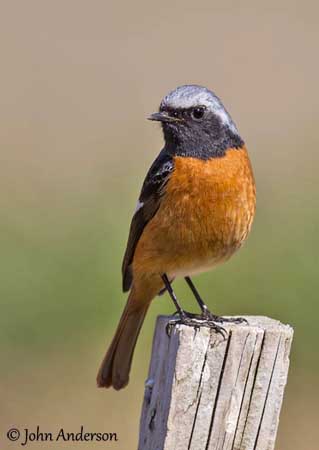
BEHAVIOUR IN WILD:
The Daurian Redstart feeds on insects, berries and seeds. Insects are its main food, especially during the breeding season.
Its slender bill is perfectly adapted for surface and aerial foraging behaviour.
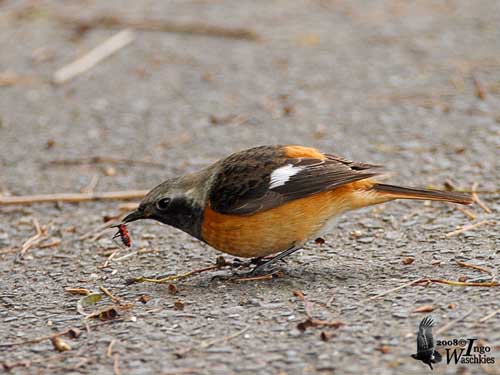
It performs short flights from a perch to catch preys such as spiders and caterpillars. It also may performs short aerial sallies. While foraging, it has an agile flight.
During the breeding season, the Daurian Redstart is territorial and the species is monogamous. The male establishes and defends the territory where it attracts females. It proclaims and maintains this area by singing.
The courtship displays are poorly known, but it probably performs flight displays and chases like other redstarts. Exaggerated postures to enhance the plumage pattern, white wing patches, rufous rump and underparts, grey crown and two-tone tail are performed too. Courtship feeding by male to female is reported too.
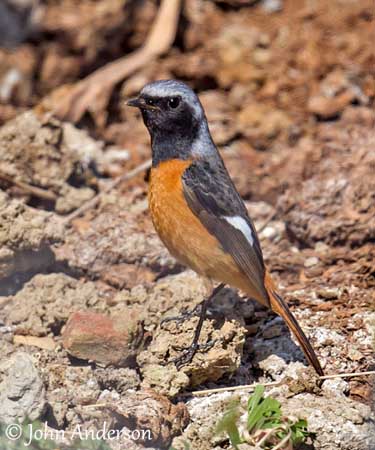
The tail pattern is distinctive and used as visual signal during interactions and displays, including when the bird flies a short distance. Quick tail movements, quivering, wagging, cocking or fanning can be sometimes combined and display the colourful rectrices’ pattern. In addition, the white wing markings reinforce these visual signals.
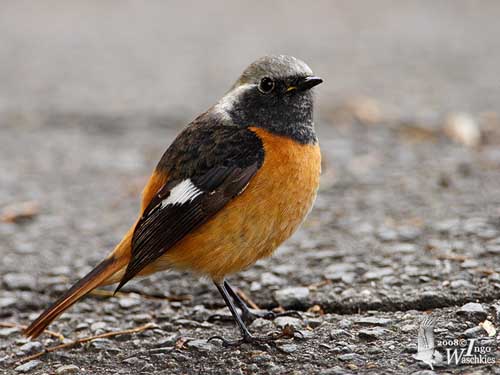
REPRODUCTION OF THIS SPECIES:
The breeding season occurs from April to August, with a peak in May/June.
The Daurian Redstart nests in hole in ground, tree, rock, wall, bank or cliff, and even in old buildings, but usually below 1, 50 metre.
The cup-shaped nest is made with straw, bark, moss and rootlets. The inner cup is lined with soft grass, hair and feathers.
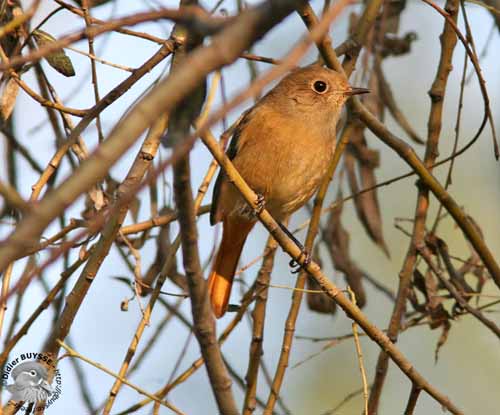
The female lays 3-6 variably coloured eggs, pinkish, whitish, pale greenish or pale blue with brown markings. The incubation lasts about 16-18 days (in captivity). The young fledge about two weeks after hatching.
PROTECTION / THREATS / STATUS:
The Daurian Redstart appears to be common in most parts of the breeding range, in spite of several variations.
But currently, this species is not threatened.
